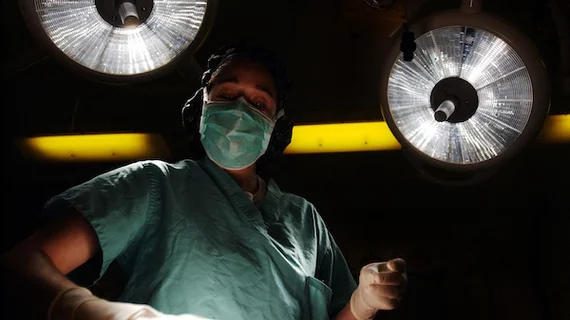IVUS-guided PCI associated with improved outcomes
Intravascular ultrasound (IVUS) use leads to improved long-term outcomes for percutaneous coronary intervention (PCI) patients, according to new findings published in JACC: Cardiovascular Interventions. However, the use of IVUS guidance during PCI procedures remains incredibly low.
The study’s authors tracked Medicare data from more than 1.8 million PCI patients who received treatment from 2009 to 2017. To account for the impact of hospital-based treatment, patients undergoing IVUS-guided PCI were matched and compared with non-IVUS patients who received care at the same facility.
Overall, IVUS was used during just 5.6% of all PCI procedures. Of the facilities examined for this study, 55.5% did not use IVUS-guided PCI at all or used less than 1% of the time.
Looking at patient outcomes, the researchers found that mortality rates after one year (11.5% vs. 12.3%), myocardial infarctions (4.9% vs. 5.2%) and repeat revascularizations (6.1% vs. 6.7%) were all lower for patients with IVUS-guided PCI.
“Despite its potential benefits, IVUS remains underused in the United States,” wrote lead author Amgad Mentias, MD, MSc, University of Iowa Carver College of Medicine in Iowa City, and colleagues. “Studies from other countries report the prevalence of IVUS use ranging from 22% to more than 90% of PCI cases. Furthermore, there is a high variability of IVUS use in PCI among different hospitals in the United States.”
JACC: Cardiovascular Interventions also published an editorial by co-authors Lorenz Räber, MD, PhD, and Yasushi Ueki, MD, both of Bern University Hospital. Räber and Ueki summarized the findings of Mentias et al., noting that “IVUS use in the United States and elsewhere should be improved.”
“The reported main reasons for the reluctance use of IVUS are concerns regarding cost, safety, additional procedural time, and operator expertise,” the co-authors wrote. “Cost-effectiveness was not reported in the current study, but a prior study demonstrated a positive economic impact compared with angiography guidance particularly when IVUS-guidance was applied in patients at a higher risk for cardiac events. Safety is no concern: A meta-analysis showed no increased risk of periprocedural MI.”
Räber and Ueki concluded by writing that “image-guided PCI should become a mainstay of complex PCI procedures.”

